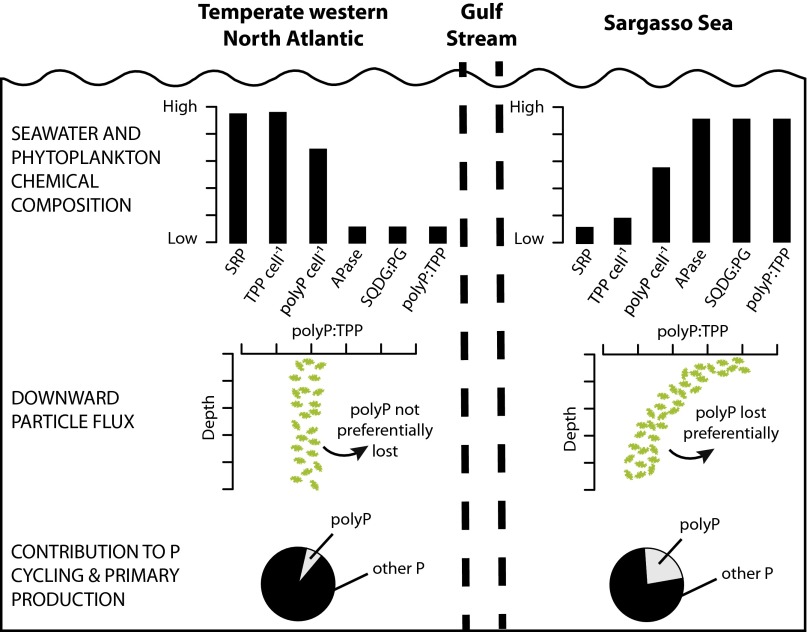Fig. 4.
Conceptual model highlighting the biogeochemical differences between the two North Atlantic provinces in phytoplankton phosphorus physiology. In the temperate western North Atlantic, high external P concentrations provide enough P for cells to synthesize phospholipids, carry high total intracellular P quotas, and high polyphosphate (polyP) levels due to luxury storage. However, polyP is overall a modest component of total cellular P. As dead particles sink out of the euphotic zone and are degraded and reprocessed by microbes and zooplankton, polyP is lost in proportion to total P, so the polyP:TPP ratio does not change with depth. Consequently, the contribution of polyP to overall P cycling and primary production is minor. In the subtropical western North Atlantic (Sargasso Sea), ultra-low ambient P concentrations induce a cellular P-stress response, leading to substitution of non-P lipids for phospholipids, production of the alkaline phosphatase enzyme, a strong reduction in total cellular P, but retention of a significant polyP pool. Sinking particles preferentially lose polyP relative to total P, possibly due to preferential remineralization, allowing P from polyP to be preferentially retained in the upper ocean. Consequently, polyP is a significant, previously unrecognized pool of bioavailable P in this oligotrophic system, which likely supports a larger fraction of primary production and carbon export than in nutrient-replete waters.

